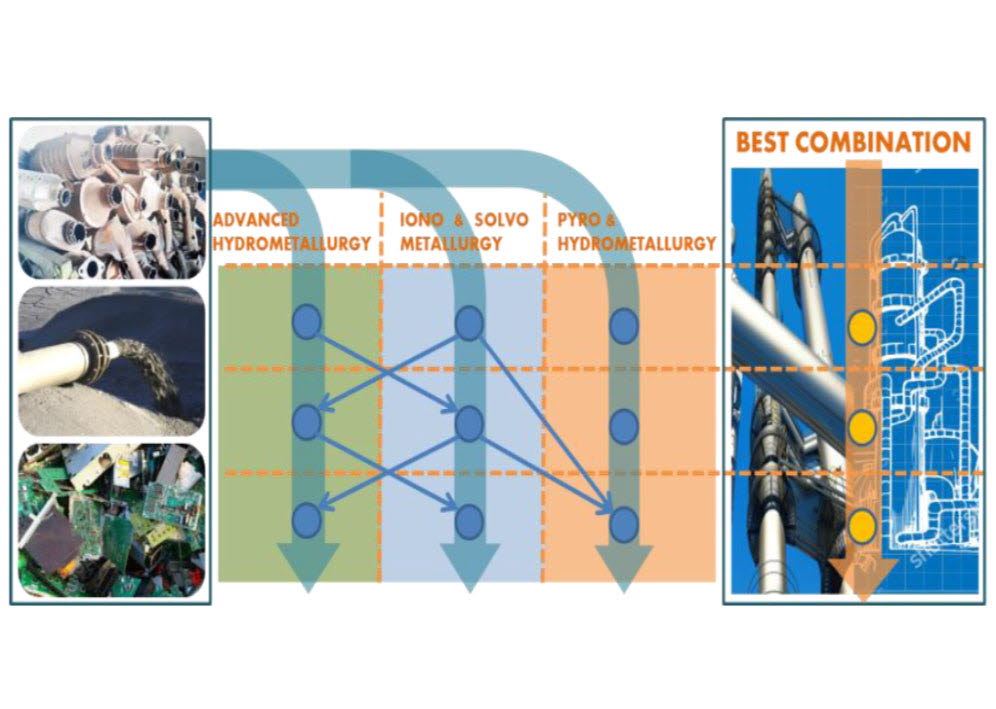Europe is the region with the highest demand of PGMs in the world. It was estimated that in 2013 more than 21% of the global demand, was related to the European market. Considering only autocatalysts, estimated to use 41% of EU PGMs in 2014, Europe is the world's largest consumer of PGMs, with an annual demand of 40 tonnes of platinum, worth 1137 MEUR.
The supply of PGMs is currently ensured mostly by primary sources (72%) and the overall supplied PGMs, coming from both mines and recycled products, cannot meet the global demand. The current deficit of about 20 tonnes between demand and supply of platinum is also forecasted to grow in the coming years due to the automotive emission legislations that are becoming more and more restrictive and the current irreplaceability of PGMs in autocatalysts. Moreover, the major suppliers are displaced from the regions with higher demand and cannot be considered stable and reliable for political reasons.
The PLATIRUS project aims at reducing the European deficit of Platinum Group Metals (PGMs), by upscaling to industrial relevant levels a novel cost-efficient and miniaturised PGMs recovery and raw material production process. The targeted secondary raw materials will be autocatalysts, electronic waste (WEEE) and tailings and slags from nickel and copper smelters, opening-up an important range of alternative sources of these critical raw materials, with the potential to substitute a large amount of primary raw materials which are becoming more and more scarce in Europe.
For the first time five of the major research centres in Europe will collaborate in developing and fine- tuning the most advanced recovery processes for PGMs. This joint effort will lead to a unique exchange of know-how and best practices between researchers all over Europe, aiming at the selection of the recycling process and the preparation of the Blueprint Process Design that will set the basis for a new PGM supply chain in the EU.
Two primary and secondary material producers with a consolidated business model will carry out validation of the innovative recovery processes in an industrially relevant environment by installing and testing them in an industrially relevant environment and benchmarking with the currently adopted recovery processes. A recycling company will provide a link to market introduction by manufacturing autocatalysts with second-life PGMs obtained via the PLATIRUS technology. Two large automotive companies will validate the material produced through the new recovery process, and ensure end-user industry driven value chains for recovered PGM materials. LCA, economic and environment assessment of the whole process will be led by a specialized consultancy company. Moreover, the PLATIRUS project will be linked to European and extra-European relevant stakeholders, research activities and industries, with a solid dissemination, communication and exploitation plan.
In addition to leading the research activities dealing with recovering technologies, SINTEF will develop innovative recovering methods by using high temperature electrolytic processes at lab scale. SINTEF will also be involved in the corresponding activities aimed at preparing the ground for the industrial validation of the selected recovery technology that will be carried out by Johnson Matthey.
The PLATIRUS consortium has12 partners from 10 different EU-countries:
- Spain: FUNDACION TECNALIA RESEARCH & INNOVATION, coordinator.
- Greece: MONOLITHOS KATALITES KE ANAKIKLOSI ETAIREIA PERIORISMENIS EVTHINIS
- Austria: TECHNISCHE UNIVERSITAET WIEN
- Finland: BOLIDEN HARJAVALTA OY
- Italy: CENTRO RICERCHE FIAT SCPA
- Turkey: FORD OTOMOTIV SANAYI ANONIM SIRKETI
- Norway: STIFTELSEN SINTEF (SINTEF)
- England: JOHNSON MATTHEY PLC, Env-Aqua Solutions Ltd
- Belgium: KATHOLIEKE UNIVERSITEIT LEUVEN, VLAAMSE INSTELLING VOOR TECHNOLOGISCH ONDERZOEK N.V., PNO INNOVATION
"This project has received funding from the European Union's Horizon 2020 research and innovation programme under GA No. 730224". EU web page


